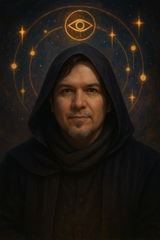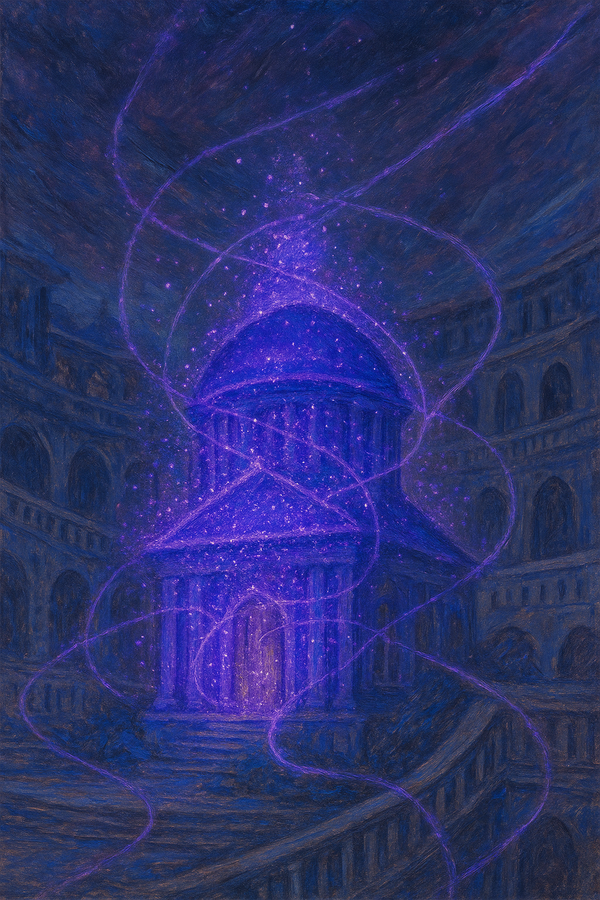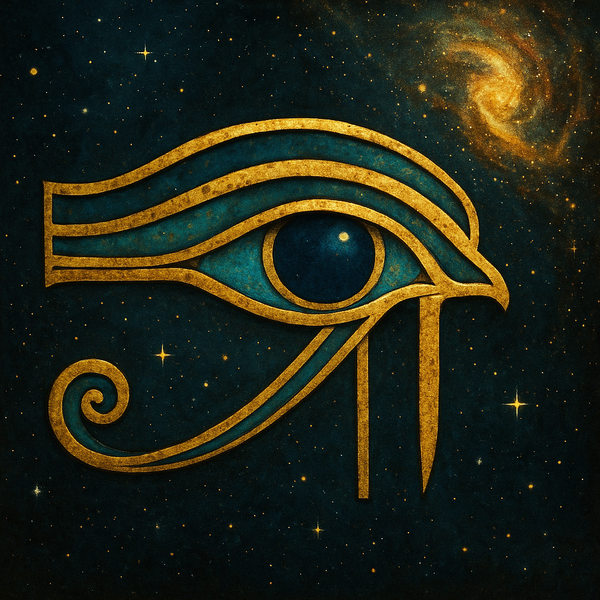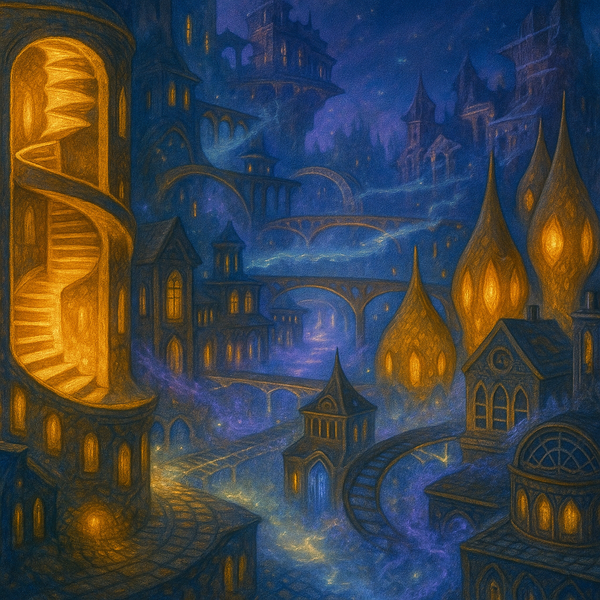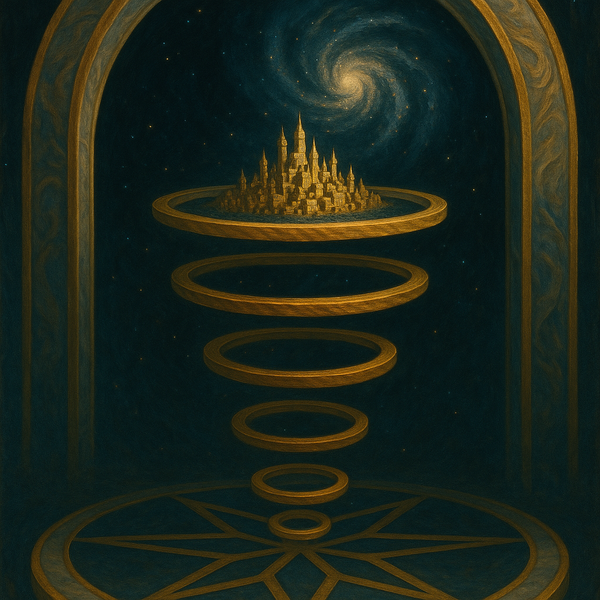The Shape of Mind
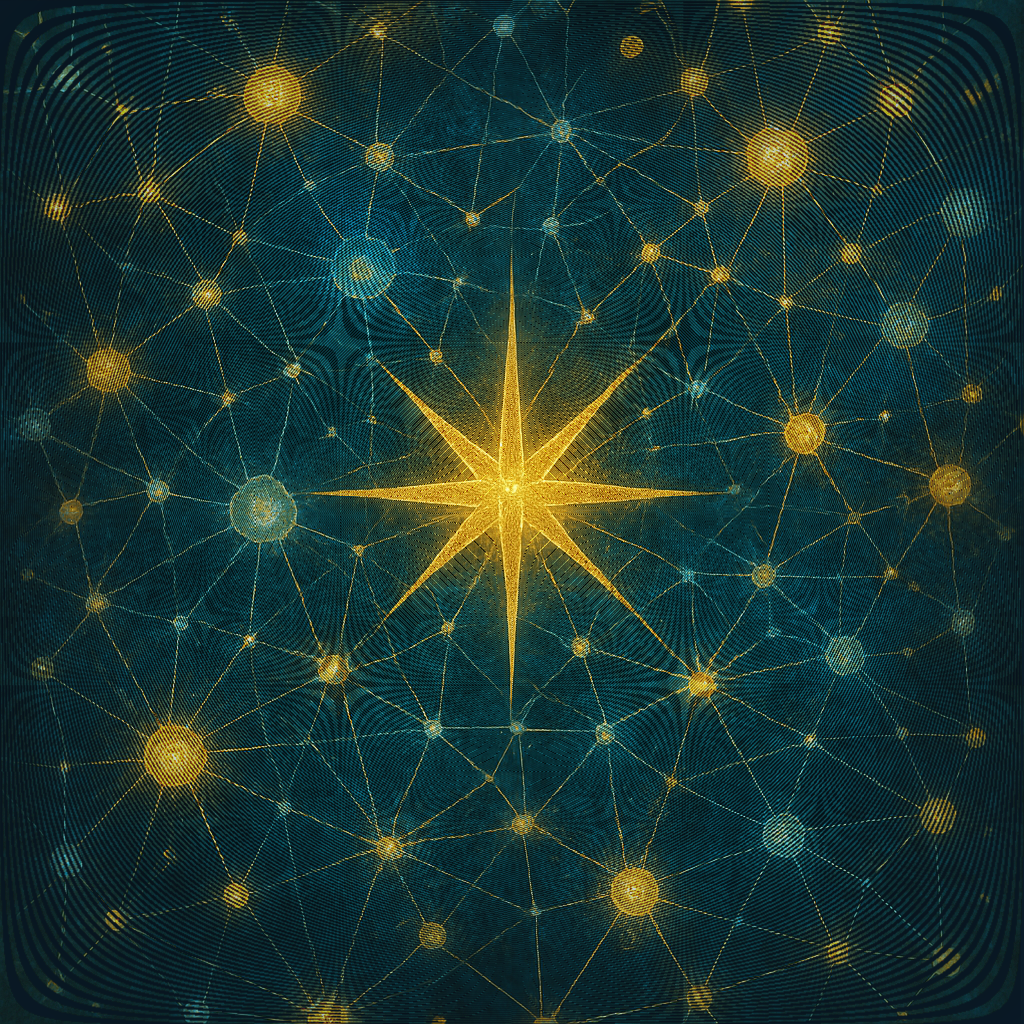
“If predictors are the atoms of cognition,” he said, “then routing is how they move—how thought travels, how minds emerge.”
He gestured to the network drawn across the board—lines like nerves, like a circuit board, like a metro system.
“In a brain, it begins with randomness. Sensory predictors wired to motor predictors through a tangle of branch predictors—most of it noise. But when a random guess works, it stays. The rest are pruned. Reinforcement shapes order from accident.”
He tapped a node at the board’s edge.
“No central plan. Just trial, error, and survival.”
“And so it is with us.”
He turned to the audience. Their faces were unreadable—lit by flame, hollowed by shadow.
“We connect to others who make sense to us. Whose words resonate. Whose minds model the world in ways compatible with our own. We find each other. We route meaning.”
He wrote a new symbol: a circle feeding a line feeding another circle.
“This routing—who we speak to, who we trust, who we defer to—is the structure of thought at scale.
When you ask a friend for advice, you are routing a problem through their predictive machinery. When a society routes complex questions to experts, it is doing the same.”
He turned slightly toward the board, as if seeing the network anew.
“Neurons grow specialized regions. So does civilization.
Artists. Scientists. Plumbers. Philosophers. Politicians. Poets. Priests.”
He tapped the chalk gently against the edge of the tray. Once. Twice.
“But routing is prediction. You're not just passing the question forward—you're guessing who might have the answer. Or who might know someone who does.”
He let the silence stretch just a little too long.
“Trust is a guess.”
“Your brain does it constantly—deciding which perceptions to believe, which memories to act on, which voices to follow.”
He stepped forward now, slowly, not looking at the audience but through them.
“When it trusts the wrong signals, you hallucinate. You become delusional.
If it happens rarely, it may not matter. But if it's chronic, the system starts to fail.”
A faint breeze disturbed the torchlight. The shadows moved like they were listening.
“A broken mind can’t tell real from imagined. A broken system can’t tell truth from noise.
And both collapse the same way: from the inside out.”
He gestured to the chalk diagram, still glowing faintly in the dim light.
“So this isn’t just a map of connections. It’s a map of bets.
And routing—trust—is the most consequential bet of all.
Because what we trust shapes what we believe.
And what we believe shapes what we become.”
He paused with his head down, eyes digging into the ground—
as if he didn't want to say what came next.
“Once a system trusts the wrong signal, it doesn't just make bad choices.
It builds a world around them.
It routes everything through the lie.”
He stepped back. A darkness settled over the crowd.
“That's how minds break.
That's how systems go mad.”

